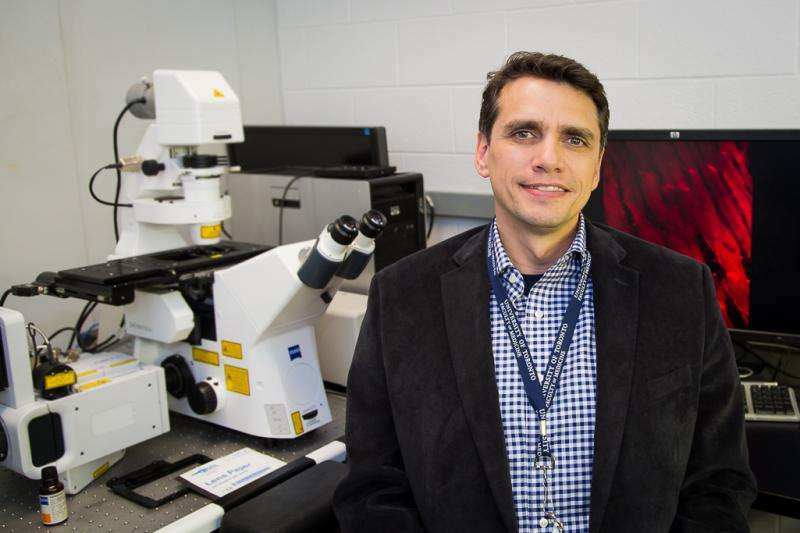What powers the pumping heart?

Researchers at the Ted Rogers Centre for Heart Research have uncovered a treasure trove of proteins, which hold answers about how our heart pumps—a phenomenon known as contractility.
Led by University of Toronto Physiology Professor Anthony Gramolini and his collaborator, Professor Thomas Kislinger in the Department of Medical Biophysics, the team used high-throughput methods to identify more than 500 membrane proteins on the surfaces of cardiac contractile cells, which are likely to have a critical role in normal heart function. The proteins may also play a part in heart failure and abnormal heartbeat patterns known as arrhythmias.
"In addition to providing a new understanding of what makes our hearts pump, these findings could also help researchers uncover new information about how heart disease affects the signal pathways in our hearts. That might pave the way to find ways to prevent or reverse those changes," says Gramolini.
During the study, the researchers found about 500 novel molecules that have been conserved throughout evolution. These molecules haven't been studied in the heart and little is known about what they do in other tissues.
The group's research focused on a protein called transmembrane protein 65 (Tmem65). By studying human stem cells and zebrafish using cell imaging and biochemical techniques, the researchers discovered that Tmem65 is involved in communication and electrical processes known as electrical coupling and calcium signaling. The team showed that Tmem65 regulates the connection point between adjacent cardiac contractile cells where it contributes to making the heart contract normally. Removing the protein had fatal consequences. The team also identified Tmem65 as the first critical tool for stem-cell researchers to monitor the maturation of cells in the heart's two main chambers, known as ventricles.
"These proteins are theoretically targetable for intervention as well as basic study. In this study, our focus was on Tmem65, but there are 555 proteins that we identified and showed that they are present throughout many species and are conserved throughout evolution— at least in the mouse and the human—in the heart's membrane-enriched contractile cells. Tmem65 was only the number-one candidate in our study, but theoretically, we have 554 other proteins to work through," says Gramolini.
The study, published in Nature Communications, also provides the first resource of healthy human and mouse heart-cell proteins that will help scientists develop a better understanding the mechanisms involved in cardiac disease.
Gramolini says the findings are essential for understanding cardiac biology and hopes they open the door for further study into health and disease in his lab and others.
"We need to figure out what all of these molecules are doing. My team and I hope our research sets the stage for other people to begin to pick up some of this work," says Gramolini. "These are molecules that haven't been studied, but must play some role in heart function. If a protein is conserved in evolution, generally it must have a critical function. We are very excited to look at the role of a number of these new proteins."
More information: Nature Communications 6, Article number: 8391 DOI: 10.1038/ncomms9391


















